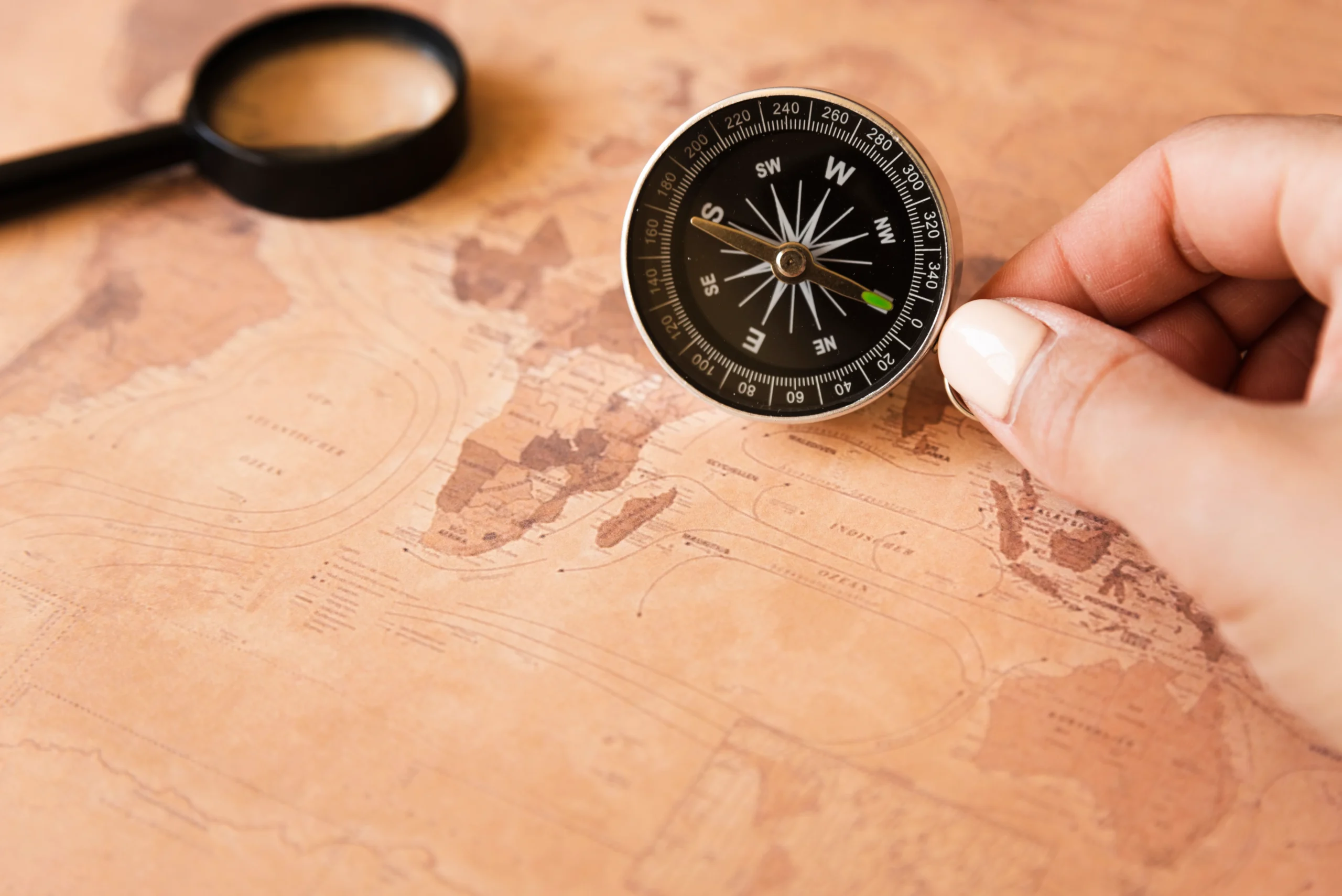Introduction
For centuries, the compass has been a vital tool for navigation, guiding travelers, explorers, and adventurers across the seas and vast landscapes. But how exactly does a compass find north? Understanding the science behind this simple yet ingenious instrument can deepen our appreciation for its role in history and its continued use today. In this article, we will explore how a compass works, the principles behind its functionality, and how it accurately points to the magnetic north.
What Is a Compass and How Does It Work?
A compass is a navigational instrument that shows direction relative to the Earth’s magnetic poles. It typically consists of a magnetic needle mounted on a pivot point that allows it to rotate freely. The needle aligns itself with the Earth’s magnetic field, indicating the direction of the magnetic north.
The Basic Components of a Compass
A compass has several key components:
- Magnetic Needle: A lightweight metal needle that is magnetized and balanced on a pivot. The needle is usually marked with a red tip to indicate the north.
- Compass Housing: The outer casing that protects the needle. It may include a rotating bezel with degree markings for taking bearings.
- Pivot Point: A small, frictionless point on which the needle rotates, allowing it to move freely in response to the Earth’s magnetic field.
The Earth’s Magnetic Field and Its Role in Navigation
To understand how a compass finds north, it is essential to comprehend the Earth’s magnetic field. The Earth behaves like a giant magnet with a magnetic north and south pole. The magnetic field is generated by the movement of molten iron in the Earth’s outer core, creating electric currents that produce a magnetic field.
Magnetic North vs. True North
- True North: Refers to the geographic North Pole, which is the fixed point where the Earth’s axis of rotation meets its surface.
- Magnetic North: Refers to the direction that a compass needle points, which is towards the Earth’s magnetic north pole. Magnetic north is not a fixed point and changes over time due to variations in the Earth’s magnetic field.
How Does a Compass Align with the Magnetic North?
The core function of a compass is its ability to align with the Earth’s magnetic field. But how exactly does this alignment occur?
Magnetism and the Compass Needle
The compass needle is made of a magnetized material that is sensitive to magnetic fields. When the needle is placed in a magnetic field, such as the Earth’s, it experiences a force that causes it to align itself with the magnetic lines of force. The red tip of the needle points towards the magnetic north, while the opposite end points towards the magnetic south.
Magnetic Declination and Its Effect on Compass Accuracy
Magnetic declination is the angle between true north and magnetic north. The value of magnetic declination varies depending on your location on the Earth’s surface. For example, if you are located west of the magnetic north pole, your compass needle will point east of true north, and vice versa.
Factors That Affect a Compass’s Ability to Find North
While compasses are reliable tools, certain factors can affect their accuracy and ability to point to magnetic north.
Local Magnetic Anomalies
Magnetic anomalies are irregularities in the Earth’s magnetic field caused by geological formations, such as iron deposits or volcanic activity. These anomalies can cause a compass needle to deviate from pointing directly north.
Interference from Nearby Magnetic Objects
Metal objects, electronic devices, and even certain types of rocks can generate their own magnetic fields, which may interfere with the compass needle’s alignment. To ensure accurate readings, keep compasses away from sources of magnetic interference.
Different Types of Compasses
There are several types of compasses, each designed for specific uses and environments.
Magnetic Compass
The most common type, a magnetic compass, relies on the magnetic needle to find direction. It is simple, inexpensive, and effective for most outdoor activities.
Gyrocompass
A gyrocompass is a non-magnetic compass that finds true north by using the rotation of the Earth. It is not affected by magnetic interference, making it ideal for maritime navigation.
Digital Compass
Modern digital compasses use sensors and software to determine direction. These compasses are often integrated into smartphones and GPS devices and provide a quick and easy way to find north.
History of the Compass and Its Evolution
The compass has a rich history that dates back over a thousand years. It has evolved significantly from its early forms to the sophisticated devices we use today.
Early Beginnings in Ancient China
The first known compasses were invented in China during the Han Dynasty (around the 2nd century BC). These early compasses were made of lodestone, a naturally magnetized mineral, and were primarily used for feng shui and fortune-telling before their navigational use was discovered.
The Spread to Europe and Maritime Exploration
By the 12th century, the use of the compass spread to Europe, where it revolutionized maritime navigation. European explorers used the compass to navigate uncharted waters, leading to the Age of Discovery and the exploration of new continents.
Practical Tips for Using a Compass
To effectively use a compass, it is important to follow certain guidelines and techniques.
Calibrate Your Compass
Regularly calibrate your compass to ensure its accuracy, especially if you are traveling in areas with known magnetic anomalies.
Keep Your Compass Level
Hold your compass level to prevent the needle from sticking or giving an incorrect reading. A tilted compass can cause the needle to drag against the housing, affecting its alignment.
Use a Map for Navigation
Combine your compass with a map to accurately determine your position and plot your route. This technique, known as orienteering, is especially useful for hiking, camping, and other outdoor activities.
Conclusion
A compass is a simple yet powerful tool that relies on the Earth’s magnetic field to indicate direction. By aligning with magnetic north, a compass allows us to navigate and find our way even in the most challenging environments. Understanding the principles behind how a compass works can help us use this instrument more effectively and appreciate its role in exploration and adventure. Whether you are an outdoor enthusiast, a seasoned navigator, or simply curious about the science of magnetism, the compass remains a fascinating and invaluable tool.
By knowing how to properly use and maintain a compass, you can ensure that it remains a reliable guide on all your journeys, helping you find your way no matter where you are in the world.


